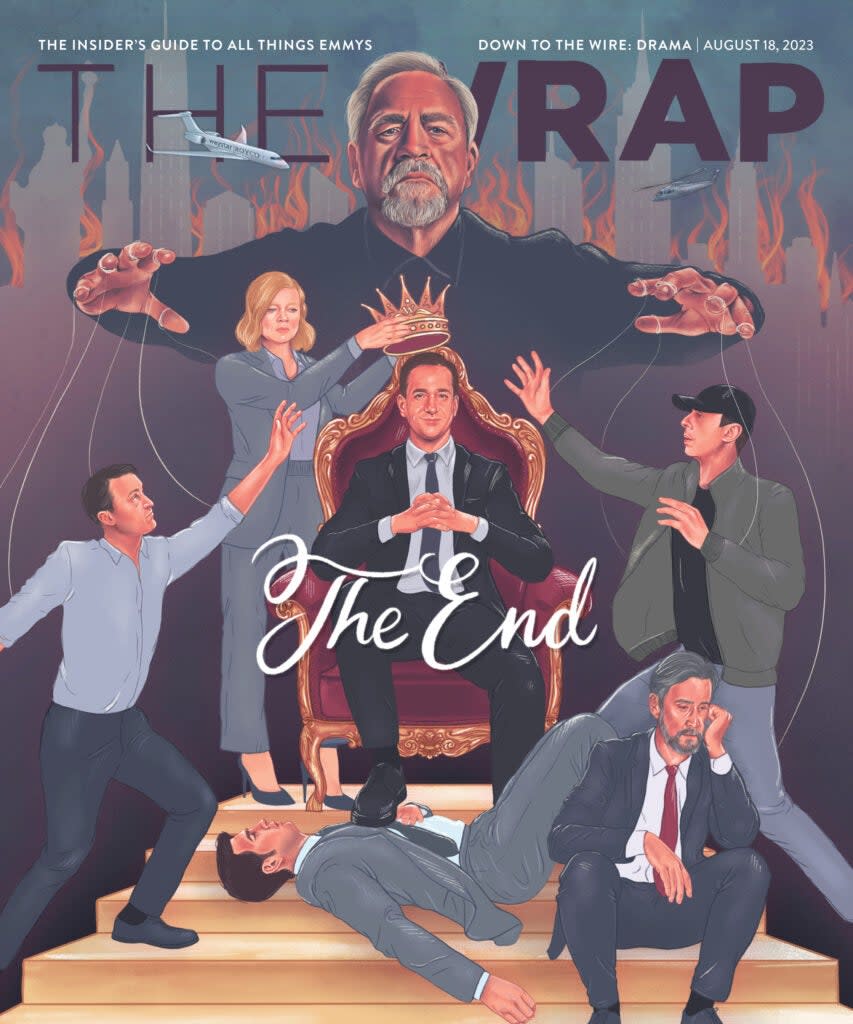‘Bad Sisters’ Director Shares the Key to Finding Its Tone: ‘It’s a Drama With Jokes’
- Oops!Something went wrong.Please try again later.
- Oops!Something went wrong.Please try again later.
- Oops!Something went wrong.Please try again later.
This story about Dearbhla Walsh and “Bad Sisters” first appeared in the Down to the Wire: Drama and Limited Series issue of TheWrap’s awards magazine.
The first time director Dearbhla Walsh met Sharon Horgan, it was to discuss Walsh directing the first episode of Horgan’s horror-comedy series “Shining Vale.” But in that conversation, the comic actress and writer also mentioned a different project that really piqued Walsh’s interest.
“She said, ‘I have this other show that I think you’d love,’” Walsh said. “‘It’s about five Irish sisters who plot to murder their brother-in-law.’ And I said, ‘You had me at five Irish sisters, which means we have to shoot in Ireland. And murdering their brother-in-law — what’s not to love?’”
Walsh did direct the first episode of “Shining Vale,” but she also hopped on board “Bad Sisters,” overseeing the first three episodes in the dead serious but blackly humorous story of four sisters scheming to get rid of the domineering and abusive husband of a fifth sibling.
With Anne-Marie Duff as the sister married to the man who is dubbed “The Prick” (Claes Bang) and Horgan, Eva Birthistle, Sarah Greene and Eve Hewson as the family members with killing on their minds, those initial episodes set the template for a series about family bonds leading to violent impulses — and they led to a nomination for Walsh’s directing of the first episode, itself titled “The Prick.”
“When you direct the first episode of a series, you do have special responsibilities,” said Walsh, who won an Emmy in 2009 for “Little Dorrit” and has also directed episodes of “Penny Dreadful,” “Fargo” and “The Punisher.” “You have to figure out: What is the tone? And also, what is the visual tone? I was quite clear about how I wanted it to look, because there were five leading actors. I wanted to very much lean into how they operated as family, how they interacted.”
That interaction became doubly important because of when the series was shot. “We made it during COVID times, when people weren’t hugging or connecting in the same way they used to,” she said. “Each of the actresses are from large Irish families, and I wanted them to bring their experiences into the fictional world. So during the rehearsal week, we did a session in the hotel pool, getting the girls used to being in their swimsuits playing games and connecting.
“I wanted to lean into the idea that these five sisters were kind of wild and untamed,” Walsh continued. “They’d been orphaned young, and they didn’t operate under the same rules as other people. And they moved like a pack: If you did something to one sister, the other sisters came and sorted you out.”
The key, she added, was to create a non-clichéd Irish community and “tell an Irish story from an Irish perspective.” The biggest challenge, though, was navigating the mixture of drama and comedy in a series that has laughs but also deals with loss and abuse. (Apple TV+ submitted it in the drama categories at the Emmys, although it could potentially have been entered as a comedy instead.)
“We set out to make a drama with jokes in it, not to make a comedy,” Walsh said. “And the reason we made that distinction was because everything had to be anchored in emotional truth and not played for laughs. In Sharon’s writing, the comedy is very particular. It’s not banter, it’s very character-driven. And I would certainly say I’m not a comedy director — I’m the least funny person in the room.”
Still, she and the producers knew that the show would need to allow its audience to embrace the humor. “The thing that became important more in the edit than on the set was, how do we give the audience permission to laugh?” she said.
As an example, she described the opening sequences, in which we meet all five sisters in various ways — most of them involving water — and then see Duff’s character in the kitchen crying. “You think it’s from cutting onions, but then there’s the reveal: There’s a man, he’s dead, and, oh my God, he’s got an erection! It’s a slow, slow build to let the audience know it’s OK to laugh.”
But the scene she feared the most leading up to the shoot came later in the episode, when the entire clan gets together for a raucous Christmas dinner in which everyone is always talking at the same time.
“I was dreading that scene,” she said. “I kept saying to the AD, ‘Push it further down the schedule, push it further down the schedule.’ But it turned out to be one of the most enjoyable scenes. I was very clear that it had to feel like an Irish Christmas and it had to be chaotic. It had to feel like what happens at the dinner table, when everybody does talk over each other.”
Walsh added: “I spent a lot of time on that in rehearsal, and when we did that, I started thinking, ‘You know, all Irish people have had the exact same upbringing.’”
Read more from the Down to the Wire: Drama and Limited Series issue here.
The post ‘Bad Sisters’ Director Shares the Key to Finding Its Tone: ‘It’s a Drama With Jokes’ appeared first on TheWrap.


